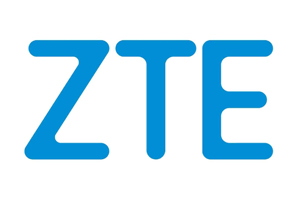ZTE Corporation, an international provider of telecoms, enterprise and consumer technologies for the Mobile Internet, reported that the “multiprotocol label switching – transport profile (MPLS-TP) OpenFlow Protocol Extensions for SPTN” (ONF TS-029) technical document, has become a formal standard of the Open Networking Foundation (ONF).
Proposed by China Mobile, it reportedly gained unanimous approval from the board of directors. The release of MPLS-TP OpenFlow Protocol Extensions for SPTN is said to lay a solid foundation for interconnection between devices from various vendors, and between devices and controllers.
China Mobile’s large-scale deployment of software-defined packet transport network (SPTN) devices sets a strong example for other operators. It is said that five operators will use this standard in the near future and other operators can adopt this standard directly.
Packet transport network (PTN) technology adopts separated forwarding/control and centralised management architecture, while OpenFlow is an open protocol that performs programmable control for flow tables on the forwarding plane.
Designing an abstract adaptation layer supporting OpenFlow to encapsulate the existing forwarding functions of PTN is an efficient and feasible way to enable PTN devices to have open and software-defined features. This can also lead to the commercialisation of PTN devices supporting SDN, so as to accelerate the development of the SPTN industrial chain.
China Mobile has been committed to SPTN technology innovation for a long time. In June 2015, China Mobile, together with ZTE, Broadcom and Microsemi set up a discussion group at ONF to carry out research on SPTN device specifications based on OpenFlow and table type pattern (TTP).
In November 2015, they proposed the first ONF draft based on SPTN TTP that extends flow tables, group tables and related fields supporting multiprotocol label switching-transport profile (MPLS-TP), extends the OF-Config protocol to support QOS, OAM, protection and alarm performance configuration, and innovatively uses local OAM processing units to ensure a 50ms protection switching time.
At the same time, China Mobile organised lab tests for SPTN devices complying with the specifications and amended the document according to the test results. Finally, the document passed the reviews of experts from a number of ONF technical groups and became a formal standard.
The “MPLS-TP OpenFlow Protocol Extensions for SPTN” standard has been widely supported by the group customer SPTN industrial chain, including chip manufacturers Broadcom, Microsemi, Centec and Marvell, equipment providers ZTE, Ericsson, Fiberhome, Raisecom, Greenwell, Chuling Ltd. and Huahuan Ltd, the instrument manufacturer Spirent and open source software Open Daylight and ONOS.
Thus far, more than 50 operators across the world have deployed MPLS-TP-based PTN devices at scale. China Mobile purchased over 590,000 group customer devices in compliance with the SPTN TTP standard in 2016, and six equipment providers helped China Mobile deploy the networks.
ZTE has actively participated in the discussion and compilation of this standard. ZTE proposed detailed and feasible solutions around equipment OAM and protection configuration as well as alarm and event reporting. ZTE developed a full series of products supporting this standard, including APPs, controllers and SPTN devices, and verified the standard during the service process.
Since 2015, ZTE has participated in all SPTN lab tests and existing network tests organised by China Mobile. The SPTN devices launched by ZTE not only meet the requirements of the standard, but also support a number of distinctive functions.
Comment on this article below or via Twitter: @ VanillaPlus OR @jcvplus






